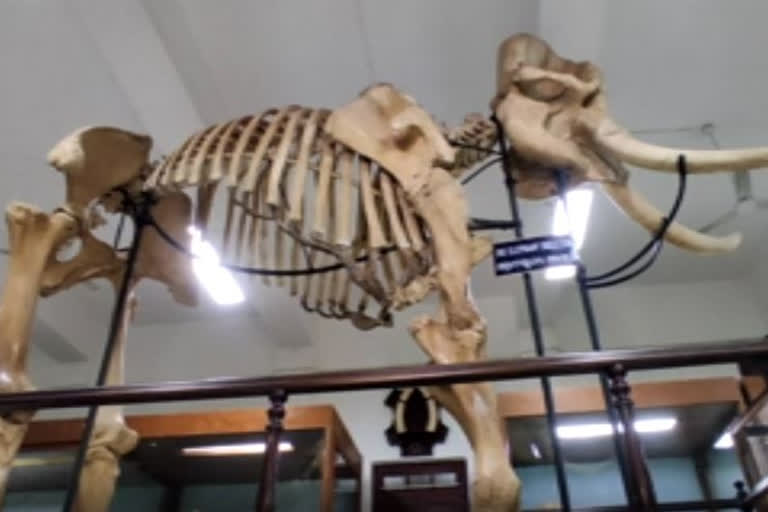Thrissur: "Chengalloor Ranganathan" a name that is part of Kerala's temple folklore and holds the crown of being the tallest Asian elephant, with 11.4 feet in height. It was a darling for elephant lovers and was the main attraction during temple festivals in Kerala for many years.
Ranganathan, on whom even poems were written by renowned Malayalam poet 'Mahakavi' Vallathol Narayana Menon, died 105 years ago. However, his skeleton has been fully reconstructed and is on display at the museum in Thrissur. This could be the only such elephant skeleton in the country where not even a micro bone was not left out during the reconstruction. This imposing structure welcomes visitors to the main hall of the museum.
Chengalloor Ranganathan was caught as a baby and grew up in the famous Sreerangam Temple in Tamil Nadu. The temple authorities had used this elephant to bring water from the river to the temple for their daily chores. When he grew up to become a massive elephant, his height became a major problem for the temple authorities as he struggled to bend through the doors of the temple.
He suffered a lot of injuries as he struggled through these main doors of the temple and developed several ulcers on his body due to injuries. In Tamil Nadu, elephants are not used during temple festivals and Ranganathan became a liability for the Srirangam temple. So they decided to sell him off and gave a newspaper advertisement in this regard.
Seeing the advertisement, Chengalloor Parameshwaran Namboodiri brought him for Rs.1500 from Sreerangam Devaswom in the year 1905. After coming to Kerala, he was treated well with proper food and medicines. Ranganathan soon became a star of temple festivals and was the main elephant to carry the 'Thidambu' (God's idol used for temple procession).
Also read: Rescuers trace injured wild elephant on Tamil Nadu-Kerala border
In 1914, he was attacked by a fellow elephant during a temple festival and was grievously injured. The owners treated him for three years but he succumbed to his injuries in 1917. The British curators at Madras Museum came to know that Ranganathan is on its death bed and approached the owners, requesting them to hand over his skeleton to the Madras museum when he dies.
The owners readily agreed. When Ranganathan finally died, the news was passed on to the British curators. They came to the spot and buried the elephant in a large pit after applying some chemicals for quick decay. Later, they opened up the pit to find the skeleton intact. They numbered each bone for reconstruction.
Meanwhile, the Thrissur museum officials requested their Madras counterparts to give the skeleton to the Thrissur museum as the elephant was pride for Kerala. They agreed and handed over the skeleton to the Thrissur museum. Where it was reassembled under the guidance of experts and installed in the central hall of the museum.
Talking about the skeleton Anil Kumar, Superintendent, Thrissur Museum said, "When you see the skeleton itself, you know how tall he was. When his muscle mass also adds to the skeleton, you can imagine how big he would have been. His pictures taken during temple festivals also show how bigger he was when compared to other elephants that stood with him during festivals. We are taking good care of the skeleton that is being put on display here with utmost care. We are also providing all the necessary care that is needed for the upkeep of it from time to time."



